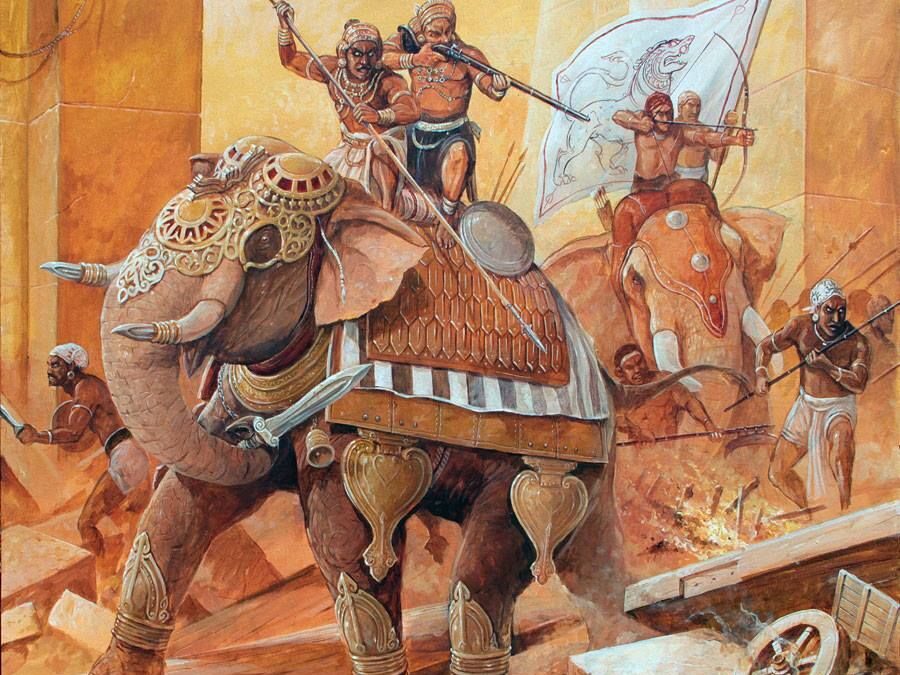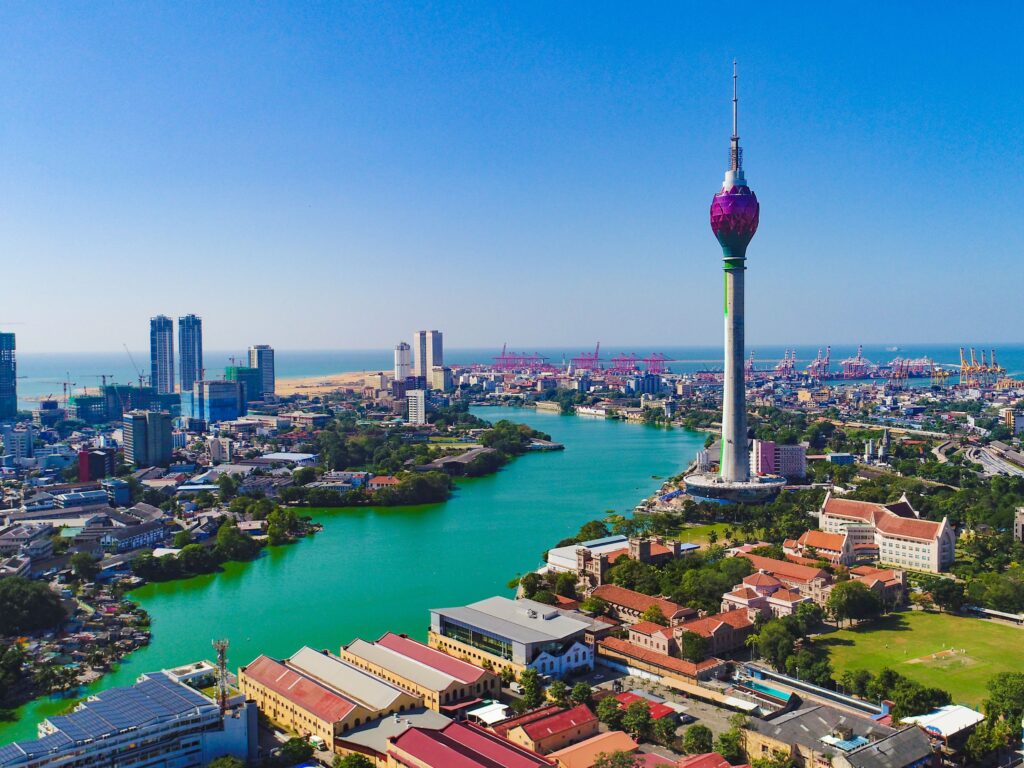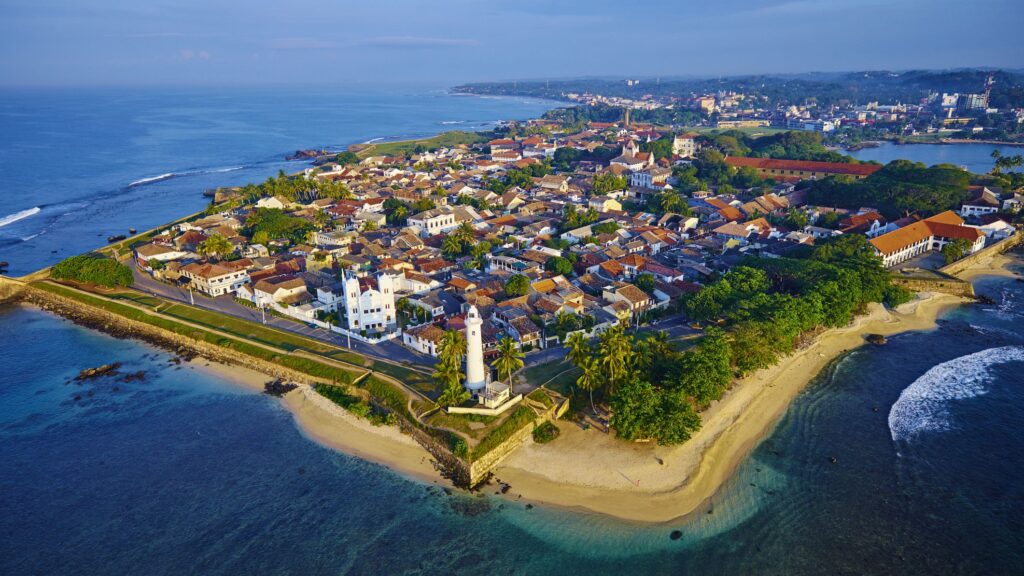History of Sri Lanka
Ancient Sri Lanka
About 500 BC, people called the Sinhalese migrated to Sri Lanka from India. According to the legend, the first settlers were led by a man named Vijaya.
For a long period of time, Sri Lanka was divided into different states. A King called Dutthagamani (161-137 BC) united them into a single kingdom. Not only a powerful ruler but also being a great builder king Dutthagamani erected palaces and temples which stand highly important and is respected by a lot of people even today. Anuradhapura was the capital of the first Sri Lankan kingdom.
According to tradition, Buddhism was introduced into Sri Lanka in 260 BC by a monk named Mahinda (also called Mihindu), who was the son of the great Indian emperor Dharmashoka. It soon became an integral part of the Sinhalese culture.
The staple diet of the Sri Lankan people has been rice for a long period. As water is an essential factor in paddy harvest, people dammed streams and rivers to gain more water for their paddy cultivation as the amount of water obtained through monsoon rains was not sufficient.
With time, it became the ruler’s responsibility to provide water for farming. King Mahasen (274-303) built large reservoirs and irrigation canals for the distribution of water. The network of reservoirs and canals gradually became much larger and more complex. In the 2nd 3rd and 4th centuries AD, Sri Lanka became a prosperous and rich kingdom. She traded with India, China, Persia, and Ethiopia. Nevertheless, from the 5th century onwards, Sri Lanka suffered invasions from India.
In the 10th century, the Chola kingdom became powerful in southern India. In 993, the Cholas captured northern Sri Lanka and they made Polonnaruwa their capital. In 1017 they captured the south. However the Sinhalese continued to resist and as a result, in 1030 the Cholas withdrew from Rohana, in the southeast. King Vijayabahu regained the rule of the north from them, in 1070. However, after his death in 1111 AD, weak rulers succeeded him. Thus, Sri Lanka broke up into independent states.
Then in 1153 Parakramabahu the Great became the king of the realm of Dakkinadesa. This renowned ruler reunited Sri Lanka and repaired the irrigation system. He died in 1183.
In the 13th century, the power of the country declined to owe to repeated invasions from India and political instability. The irrigation system began to fall apart and the people drifted to the Southwest. The capital Polonnaruwa was abandoned, In 1255.

PORTUGUESE COLONIALISM IN ANCIENT
SRI LANKA
A new era in the history of Sri Lanka began in 1505 when the Portuguese arrived seeking cinnamon (a very valuable spice). In 1517, they sent an expedition to Colombo and asked permission to build a fort there. King Vijayabahu of Kotte reluctantly assented.
However the Portuguese then ordered the king to sell them his cinnamon at a price fixed by them. The king refused, but the Portuguese forced the king of Kotte, in 1518, to agree to provide them with cinnamon each year as a tribute.
Increasing Portuguese demands led to a war in 1520-21, where the Portuguese were victorious. The king lost the support of his people and was overthrown by his 3 sons. The eldest son became King Bhuvanekbahu VI. He reigned until 1551.
However, he agreed to give his 2 brothers principalities within Kotte. The largest of these became the kingdom of Sitavaka. The smallest was based on Rayigama but when its ruler died in 1538, it too was amalgamated to Sitavaka.
DUTCH COLONIALISM IN ANCIENT
SRI LANKA
In 1636 King Rajasinha/Rajasingha of Kandy turned to the Dutch for help to defeat the Portuguese. (The power of Portugal was declining while Dutch’s was increasing.) In 1637, he received Dutch envoys. In 1638 the Portuguese invaded again but they were crushed at the battle of Gannoruwa. Afterwards, the Dutch agreed to capture the Portuguese-ruled ports on the Sri Lankan coast in return for their expenses.
Between 1638 and 1640 the Dutch captured certain ports but they held onto them instead of giving them back to Kandy, claiming that their expenses had not been paid. The Dutch and the Portuguese made peace in 1640, but war resumed again in 1652. Once again, the kingdom of Kandy formed an alliance with the Dutch. This time the Dutch attacked Colombo and captured it in 1656. However refusing to hand it over to Kandy, they pushed inland. They captured Jaffna by 1658. That was the end of Portuguese rule in Sri Lanka. The Dutch extended their rule and in 1665, they captured Trincomalee on the east coast.
BRITISH COLONIALISM IN ANCIENT
SRI LANKA
However, in 1796 Dutch rule gave way to the British. In that year the British annexed Colombo and Jaffna and the Dutch rule was extinguished. The British were keen to conquer Kandy and gained their opportunity in 1815. Kandy was ruled by Sri Wickrama Rajasinha (1798-1815) who was cruel and deeply unpopular. Some of his nobles conspired with the British to get rid of him. The British army invaded Kandy and met little resistance. The king fled abroad.
However in 1817-18, there was a rebellion in some parts of Kandy against the British rule, but it was crushed.
At first, the British trod cautiously. The British introduced a lot of things to Sri Lanka. In 1811, Trial by Jury was introduced. They built a network of roads. Then in 1833, they introduced wide-ranging reforms. English was made the official language and the administration was reformed. Slavery was abolished in 1844.



Modern Sri Lanka
The first prime minister was Dr Stephen Senanayake. When he died in 1952 his son Dudley Senanayake followed him. Dudley resigned in 1953 and was replaced by Sir John Kotewala. All three were members of the United National Party.
In 1956, their party fell from power. The next government was led by S. W. R.D. Bandaranaike. He promoted Sinhalese culture and extended state control of the economy. He was assassinated in 1959. In 1960 he was replaced by his widow Sirimavo Bandaranaike. She was the prime minister until 1965. She continued the policy of nationalization. She also brought most schools under state control. In 1965 she was replaced by Dudley Senanayake who was the prime minister again until 1970.
From the 1950s tension between Tamils and Sinhalese started to escalate. In 1956 Sinhalese was made the only official language (instead of both Sinhalese and Tamil). Moreover, Mrs Bandaranaike deported many Indian Tamil labourers. In 1971 a rebellion of young people was led by an anti-Tamil organization called the Janatha Vimukthi Permuna. The rebellion was quickly crushed. In 1972 Sri Lanka was given a new constitution and it stated that Buddhism had the ‘foremost place’ among Sri Lankan religions. This was very unpopular with the followers of other religions. Furthermore, in 1972 the number of Tamil places at universities was reduced. Moreover, in the same year, the name of the country was officially changed from Ceylon to Sri Lanka.
In 1976 the Tamil United Liberation Front was formed. They demanded a separate Tamil state. Then in 1977 Sri Lanka was rocked by ethnic riots in which 128 people died. Yet another constitution was introduced in 1978. This constitution made the president the head of state. However the new constitution failed to satisfy the Tamils and as a detrimental outcome of that, civil war broke out between Tamils and Sinhalese, in 1983. On 23 July 1983, Tamil separatists ambushed and killed 13 Sinhalese soldiers. The result was rioting in which hundreds of people died. Afterward, the Tamils fought a guerrilla war against the government.
India was drawn into the crisis in 1987 when they agreed to send a peacekeeping force to the north and the east of Sri Lanka. However, fighting soon broke out between the Indian forces and the Tamil ‘Tigers’ or guerrillas. The Indian Peace Keeping force withdrew in 1990 and the war between Tamils and Sinhalese began again. Meanwhile, in the late 1980s, Maoist Janatha Vimukion Peramuna led a violent campaign in the south. It was crushed in the period of 1989-1990. In 1993 President Premadasa was assassinated. From the mid-1990s, efforts were made to end the fighting. A cease-fire was made in February 2002 and talks were held. However, the ceasefire broke down and fighting resumed. The war ended in 2009 with the defeat of the Tamil Tigers by the Sri Lankan government.







